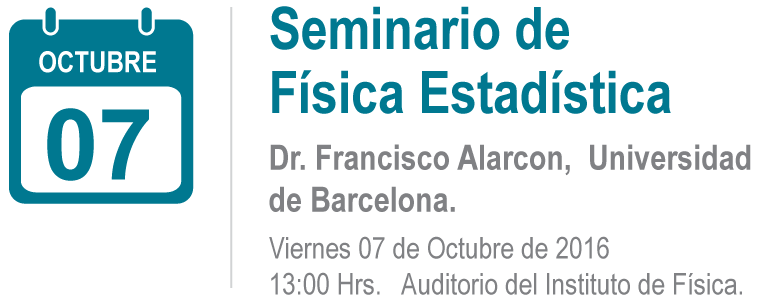
Resumen:
Microorganisms live in aqueous environments and their interaction among them
and with the fluid becomes a key feature to understand the transport of chemical
substances, energy and momentum in many biological, medical and engineering
phenomena. Microorganism suspensions are intrinsically out of equilibrium,
since they put/consume energy to/from the system and their collective behaviour
emerges from their dynamic self-organization. Such collective behaviour
has inspired researchers to deepen the understanding of the physics of motility
to engineer complex emergent behaviours in model systems that promise advances
in technological applications. I will present a computational study of a
model of self-propelled microswimmer suspensions that allows us to identify the
basic role that the hydrodynamic coupling through the embedding solvent has
in the collective behaviour of such systems. Such a fundamental understanding
will help us to identify new routes to design micro-robots that can imitate
micro-organisms. Motivated by recent experimental results, we have focused
on a simplified geometry, where the self-propelled particles move in a quasi-2D
geometry. The results show that our simulations can reproduce several regimes
of emerging collective behaviour , from isotropic to aligned suspensions; with
qualitatively different distributions of cluster-sizes depending on the symmetry
of the induced active stresses that characterize the active suspension. Specifically,
we have reproduced the living clusters observed by experimentalists for
both artificial active colloids and for some types of bacteria.
I will also show some results of spherical squirmers in 3D, where we have
observed that such systems can generate coordinate behaviours like swimming in
the same direction or create giant density fluctuations induced by the emergence
of a percolating dynamic cluster. We found that the key factor to produce these
collective motions (CM) is the hydrodynamic signature of the micro-swimmers.
In order to identify the intrinsic nature of the measured emergent CM, and rule
out finite size effects, we have had to carry out a systematic finite size analysis,
reaching large simulation boxes. The intrinsic non-equilibrium nature of the
systems, and their tendency to develop long range correlations require the use
of large scale suspensions, involving millions of swimmers, where we were able
to explore the evolution of the suspensions over long time windows to avoid
the dynamic slowing down that we have identified in active suspensions. To do
such studies it is important to have high performance computing; in our case we
had access to the MareNostrum Supercomputer at Barcelona Supercomputing
Center (BSC) and also through the Partnership for Advanced Computing in
Europe (PRACE)










